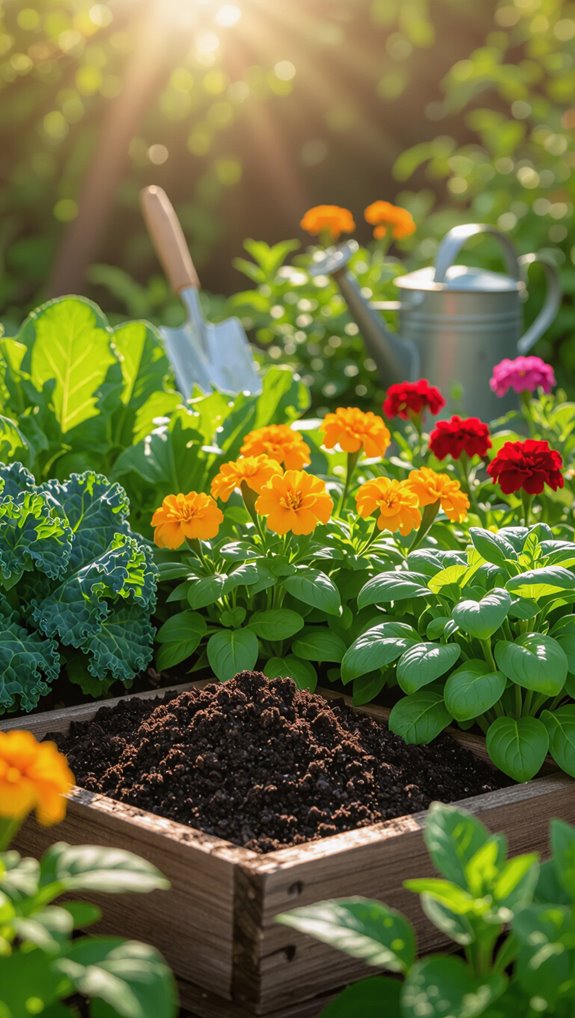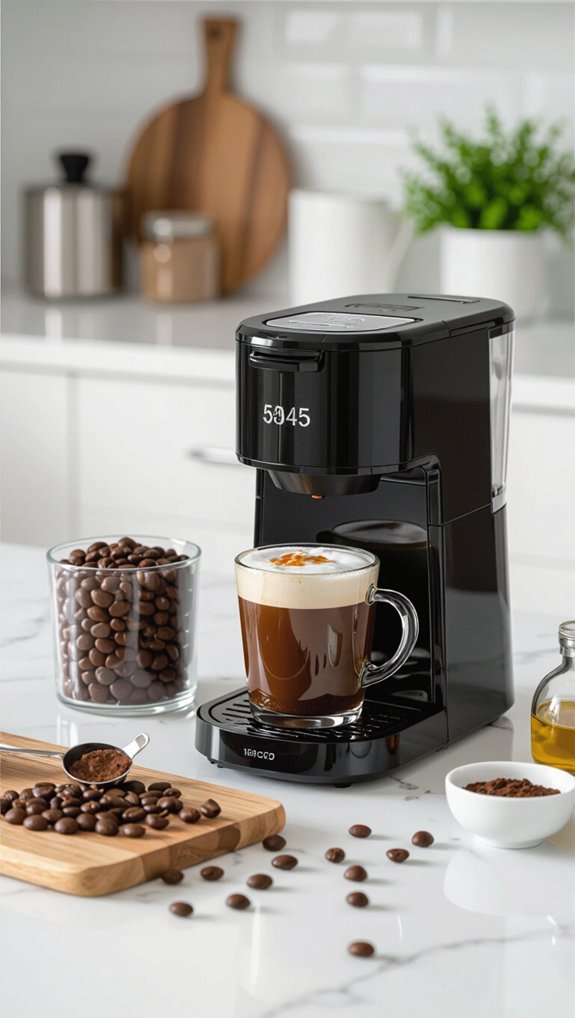Do you have a pile of used coffee grounds that you’re about to throw in the trash? Before you do, consider giving them a second life in your garden. Coffee grounds contain valuable nitrogen and other nutrients that certain plants absolutely thrive on—but only when used correctly.
Not all plants benefit from coffee grounds, and applying them the wrong way can actually harm your garden. In this guide, you’ll discover exactly which plants love coffee grounds, which ones to keep them away from, and the proper application methods that will help your garden flourish. Whether you’re growing vegetables, flowers, or shrubs, you’ll learn how to use this free soil amendment to boost plant health and reduce waste at the same time.
Table of Contents
Which Plants Actually Love Your Coffee Grounds
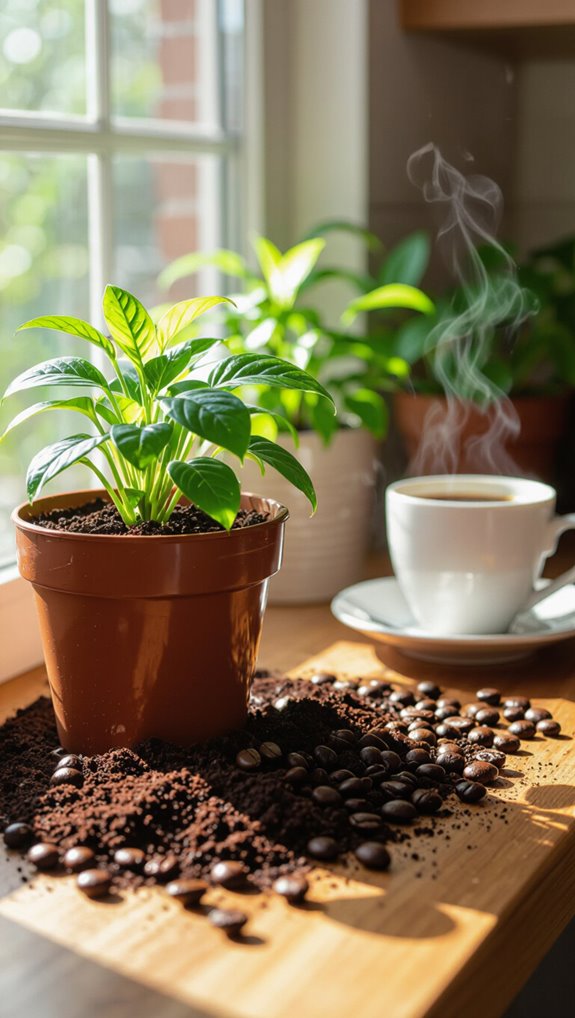
Coffee grounds aren’t just for brewing—they’re a secret weapon for certain plants that crave a little acidic boost.
Acid-loving plants like azaleas, rhododendrons, blueberries, and gardenias absolutely thrive when used coffee grounds are added to their soil. By composting coffee grounds, you’ll help maintain an ideal soil pH around 6–6.5 while providing a gentle nitrogen source.
Pro tip: Always avoid fresh grounds near seedlings, as residual caffeine can hinder germination.
When applied correctly, these grounds enhance moisture retention and give your favorite plants the nutrient kick they need to flourish.
Why Coffee Grounds Work Wonders for Gardens
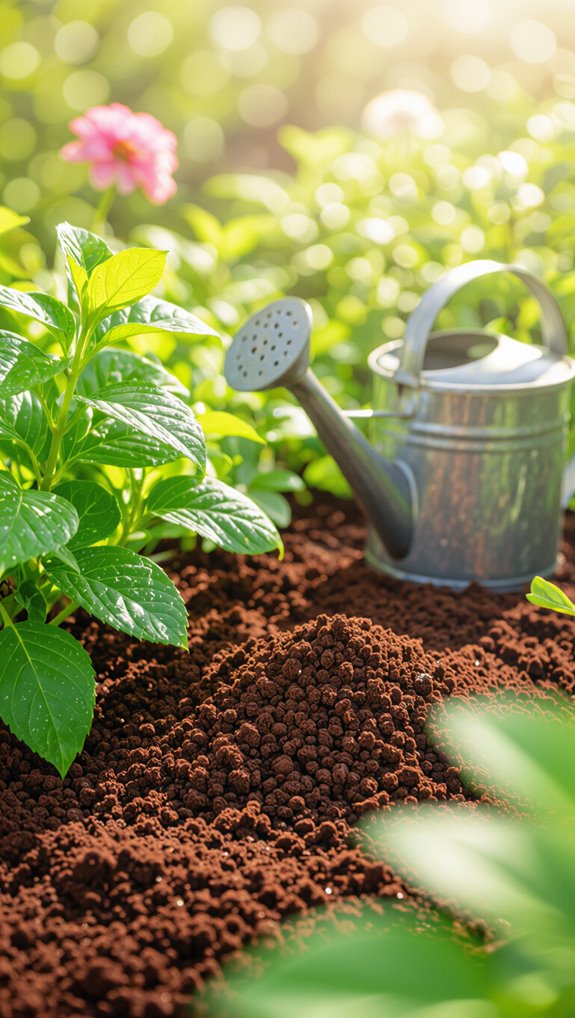
Grounds from your morning brew aren’t just waste—they’re garden gold that can transform your plant care routine. Coffee grounds pack a powerful nutritional punch, enriching soil with nitrogen, organic matter, and micronutrients that earthworms and plants love.
When added to compost, they accelerate decomposition and improve soil structure. However, it’s crucial to use them wisely—fresh grounds can compact soil and hinder seed germination.
Plants That Thrive with Coffee Ground Fertilizer
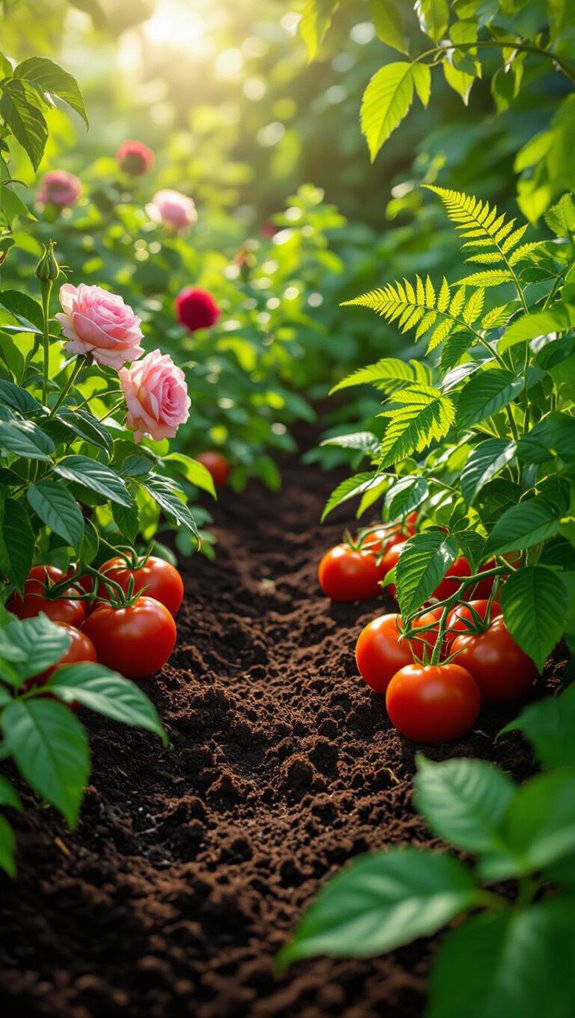
Recycling morning brew remnants into garden nutrition transforms struggling plants into thriving green companions. Coffee grounds offer a nutrient-rich boost for specific plants, making them a gardener’s secret weapon.
| Plant Category | Best Coffee Ground Applications |
|---|---|
| Acid-Loving | Azaleas, Rhododendrons |
| Flowering | Roses, Nutrient-Hungry Bloomers |
| Vegetables | Peppers, Carrots, Cucumbers |
Smart gardeners know composting coffee grounds provides nitrogen, potassium, and phosphorus. By mixing grounds carefully (≤20–30% compost volume), you’ll avoid potential root issues while nurturing acid-loving and flowering plants. Just remember: protect seedlings from direct caffeine exposure and steer clear of drought-tolerant species that prefer alkaline environments.
Which Plants Should Never Get Coffee Grounds
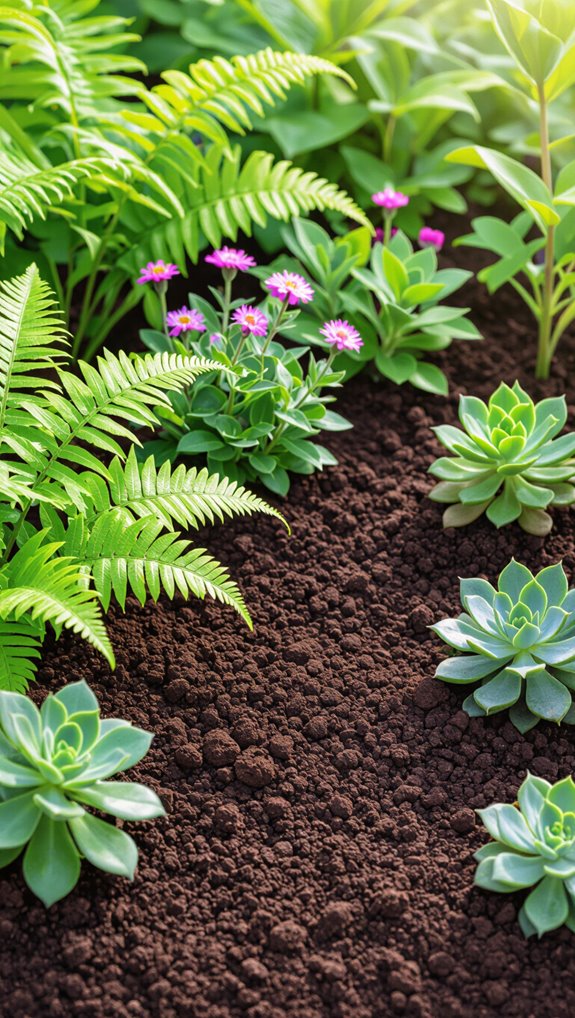
While coffee grounds can be a garden superhero for many plants, they’re definitely not a one-size-fits-all soil amendment. Succulents and cacti absolutely hate coffee grounds because they retain too much moisture, causing devastating root rot.
Seedlings and germination also suffer when exposed to grounds, as caffeine can stunt young root growth. Plants preferring alkaline soil like lavender, asparagus, and geraniums will struggle with coffee grounds that compact and repel water.
Additionally, be cautious around pets—caffeine in grounds can be toxic if ingested. The key? Know your plants’ specific needs before spreading those used coffee grounds.
How to Apply Coffee Grounds to Plants
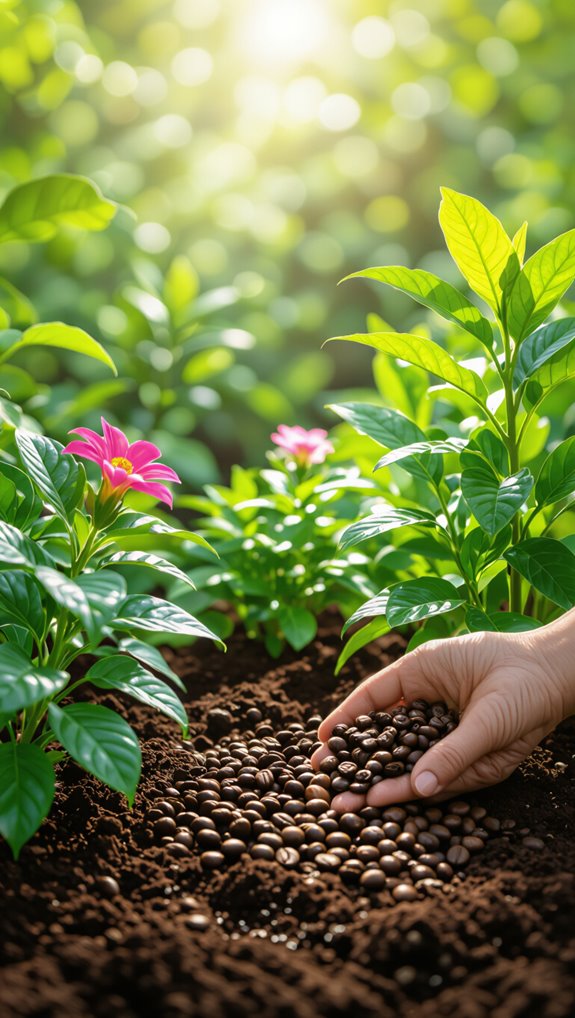
Used coffee grounds can be a fantastic garden amendment when applied correctly, with key differences between fresh and used grounds that impact their effectiveness for plant nutrition.
I’ll walk you through the safest methods for incorporating coffee grounds into your garden, focusing on proper dosage and application techniques that won’t harm your precious plants.
Whether you’re looking to boost soil health, add nutrients, or create a natural fertilizer, grasping how to use coffee grounds is crucial for gardening success.
Fresh Coffee Grounds vs Used Grounds
When you’re ready to give your plants a nutrient boost, coffee grounds can be your secret garden weapon—but not all grounds are created equal. Used coffee grounds are gardening gold: they’re stripped of harsh caffeine and acidic properties, making them safer for composting and soil enhancement. Fresh grounds can actually harm seedlings and germination if applied directly.
Insider tip: Mix used grounds into bagged potting mix or compost, keeping the ratio under 20%. For a liquid coffee fertilizer, steep used grounds overnight in water and apply weekly. Your plants will thank you for the nutrient-rich, organic pick-me-up!
Application Methods for Different Plant Types
Let’s brew up the perfect coffee ground application strategy for your garden’s different plant types! For acid-loving plants like azaleas and blueberries, a weak liquid feed steeped overnight works wonders.
When composting coffee grounds, limit them to 20-30% of total volume and mix sparingly into potting mix or garden beds.
Mulching? Blend grounds with shredded leaves or wood chips to prevent compaction.
Caution: avoid fresh grounds near seedlings or succulents. Stick to composted grounds and infrequent applications to keep your plants perky and prevent nutrient imbalances. Happy gardening!
Proper Dosage and Frequency Guidelines
Carefully applying coffee grounds to your plants requires a strategic approach to avoid nutrient overload and potential root damage. When composting, limit grounds to 20-30% of total volume, ensuring balanced nutrition for your garden. For acidic plants like azaleas and blueberries, sprinkle grounds sparingly to prevent root stunting.
As a soil amendment, work composted grounds into the top 2-3 inches, avoiding surface piling. Create a weak liquid fertilizer by steeping grounds overnight, applying no more than weekly for containers or monthly for garden beds. Moderation is key in coffee ground application.
Do Coffee Grounds Really Change Soil pH
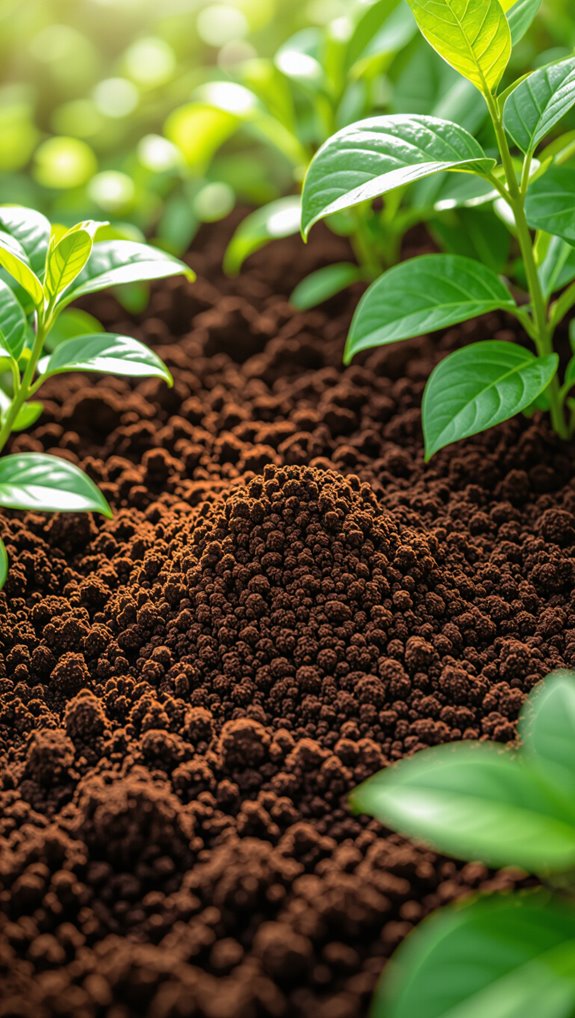
Despite popular gardening myths, coffee grounds don’t automatically or predictably change soil pH in the way most people assume. Used coffee grounds’ acidity varies widely, and much of their soluble acid gets removed during brewing.
| Soil pH Impact | What to Expect |
|---|---|
| Fresh Grounds | Near-neutral |
| Composted | Slightly acidic |
| Overall Effect | Modest change |
When adding used coffee grounds to your compost pile or directly to soil, they’ll trend toward pH 6-6.5. This means they can help acid-loving plants, but won’t dramatically shift alkaline soils. Always test your soil before and after application to understand the specific impact in your garden.
Common Mistakes When Using Coffee Grounds
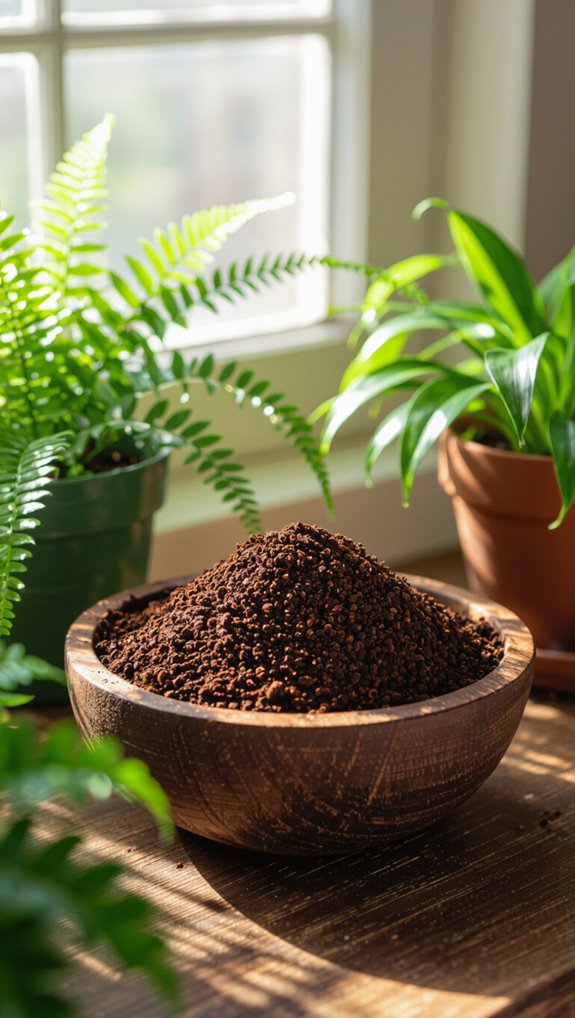
When gardeners eagerly dump coffee grounds directly into their soil, they often unknowingly create more problems than benefits. Used grounds can become compacted, forming a water-repellent crust that suffocates plant roots. To avoid using grounds improperly, always mix them into your compost bin during the composting process.
Key mistakes include:
- Applying thick layers of grounds as mulch
- Using grounds around delicate seedlings
- Relying on grounds as a sole fertilizer
Limit coffee grounds to 20-30% of your compost mix. Remember, moderation is crucial for maintaining a healthy garden ecosystem and preventing nutrient imbalances that can harm your precious plants.
Composting Coffee Grounds with Other Kitchen Scraps
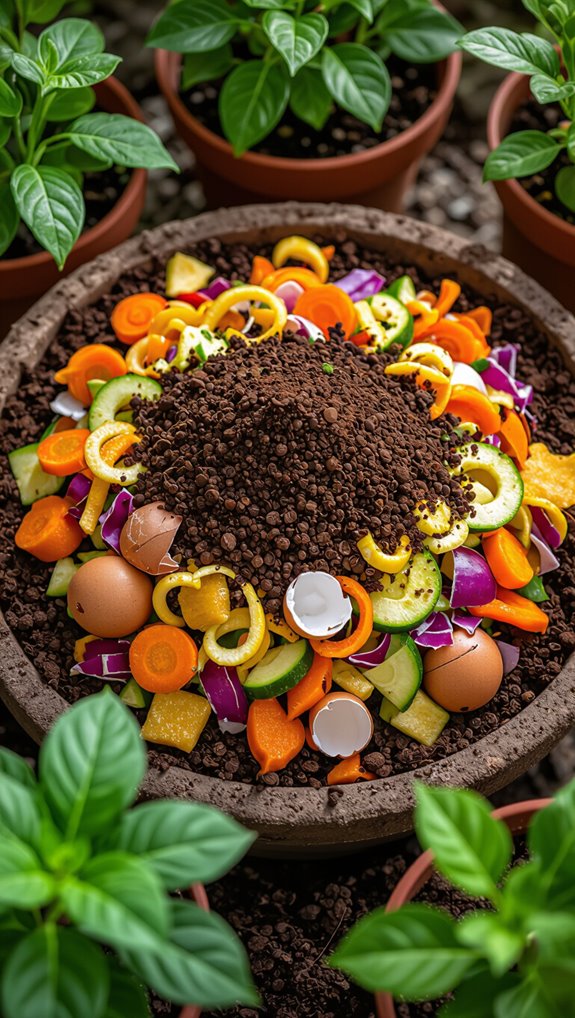
After grasping how to avoid misusing coffee grounds in the garden, let’s explore how to transform those used coffee grounds into black gold for your compost pile.
Coffee grounds are a nitrogen-rich “green” ingredient that partners perfectly with brown materials like leaves and shredded paper.
Aim for a 3:1 brown-to-green ratio when adding kitchen scraps, eggshells, and decomposed grounds to your compost.
Spread grounds thinly to prevent mold, and mix them periodically into your pile.
Turn the compost regularly to help integrate nutrients, ensuring a balanced, rich soil amendment that most plants will love.
Can You Use Coffee Grounds Year Round
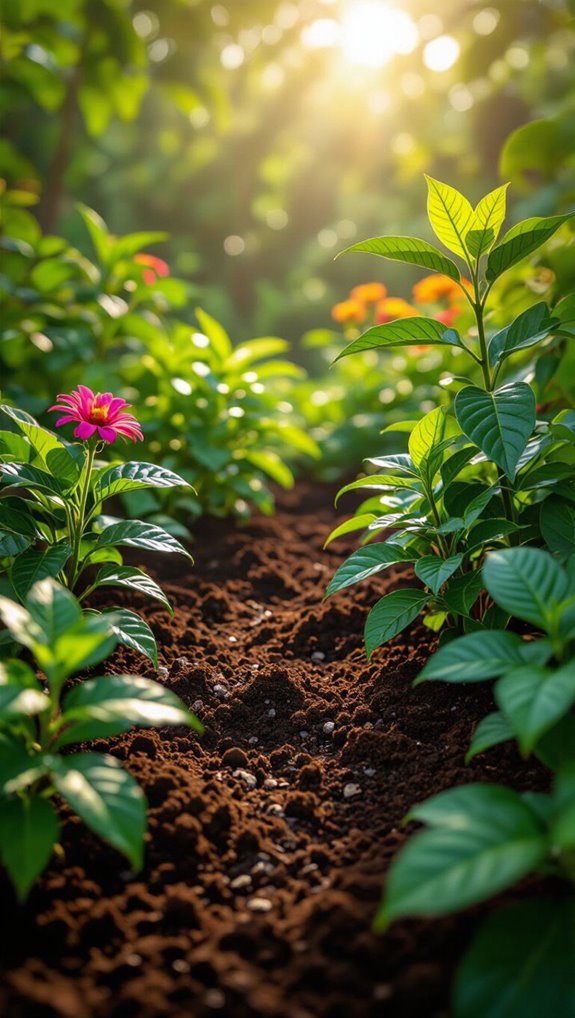
Because coffee grounds are such a versatile gardening resource, you can absolutely use them year-round with some strategic adjustments.
During growing season, I recommend applying small amounts to containers weekly or monthly to garden beds, focusing on composted coffee grounds for optimal results.
In winter months, be cautious about fresh ground applications. Limit direct usage and prioritize incorporating used coffee grounds into finished compost.
This approach prevents potential issues like soil compaction and root fungal problems. For acid-loving plants, composted grounds can slowly modify soil structure and enhance water retention throughout the year.
Signs Your Plants Are Loving Coffee Grounds
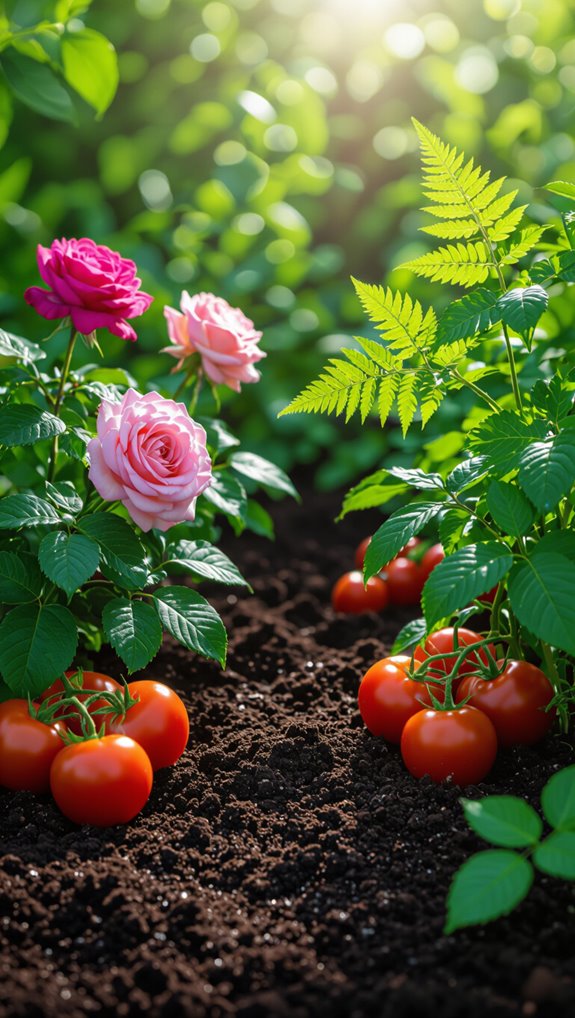
Unveil the secret language of your plants as they communicate their love for coffee grounds through telltale signs of robust health and vibrant growth. Dark, glossy leaves and vigorous foliage hint that composted grounds are working magic, releasing nitrogen and boosting plant vitality.
Increased earthworm activity and crumbly soil near treated areas signal improved structure. Acid-loving plants like azaleas and blueberries will show enhanced flower and fruit production.
When your garden bed looks lusher, with fewer weeds and richer texture, you’ll know your plants are benefiting from used coffee grounds’ transformative power.
Frequently Asked Questions
How to Put Coffee Grounds on Plants?
I sprinkle cooled coffee grounds thinly on soil, gently mixing them into the top 1-2 inches. I’m careful not to create a water-repellent crust and use small amounts to avoid overwhelming my plants with caffeine.
Which Plants Should You Not Put Coffee Grounds On?
I won’t use coffee grounds on succulents, seedlings, lavender, rosemary, asparagus, beets, geraniums, or sensitive crops like tomatoes. They’re vulnerable to moisture retention, caffeine inhibition, pH changes, or potential growth suppression from concentrated grounds.
How Often Should I Put Coffee Grounds on Plants?
I apply coffee grounds sparingly—no more than once a month directly to soil, and only a thin layer mixed into the top 1-2 inches. For containers, I use a weak liquid feed weekly to avoid over-concentrating nutrients.
What Pests Do Coffee Grounds Keep Away?
I’ve found coffee grounds can help repel slugs, snails, and cats, and may discourage some insects. However, they’re not a guaranteed solution, and you’ll need to reapply frequently and combine with other pest control methods.
In Conclusion
Coffee grounds are a gardener’s secret weapon for nurturing acid-loving plants. By composting or carefully mixing used grounds into soil, you’ll boost nitrogen, improve soil structure, and attract beneficial earthworms. Remember to use grounds sparingly—about 20-30% of your compost—and always work them gently into the top soil layers.
Now that you know what plants like coffee grounds and how to apply them properly, you can transform your daily coffee ritual into a sustainable gardening practice. From azaleas and blueberries to roses and tomatoes, acid-loving plants will flourish when you feed them this nutrient-rich amendment. The key is patience and moderation—letting grounds decompose properly and avoiding over-application ensures your plants receive benefits without the risk of nitrogen burn or soil imbalance.
As you continue your coffee-fueled gardening journey, you’ll naturally generate more grounds to work with. If you’re looking to maximize your supply while enjoying better coffee at home, check out our coffee machine reviews to explore smart, well-reviewed options that fit your lifestyle. Whether you’re a casual gardener or a dedicated green thumb, every cup you brew can contribute to a healthier, more vibrant garden.

